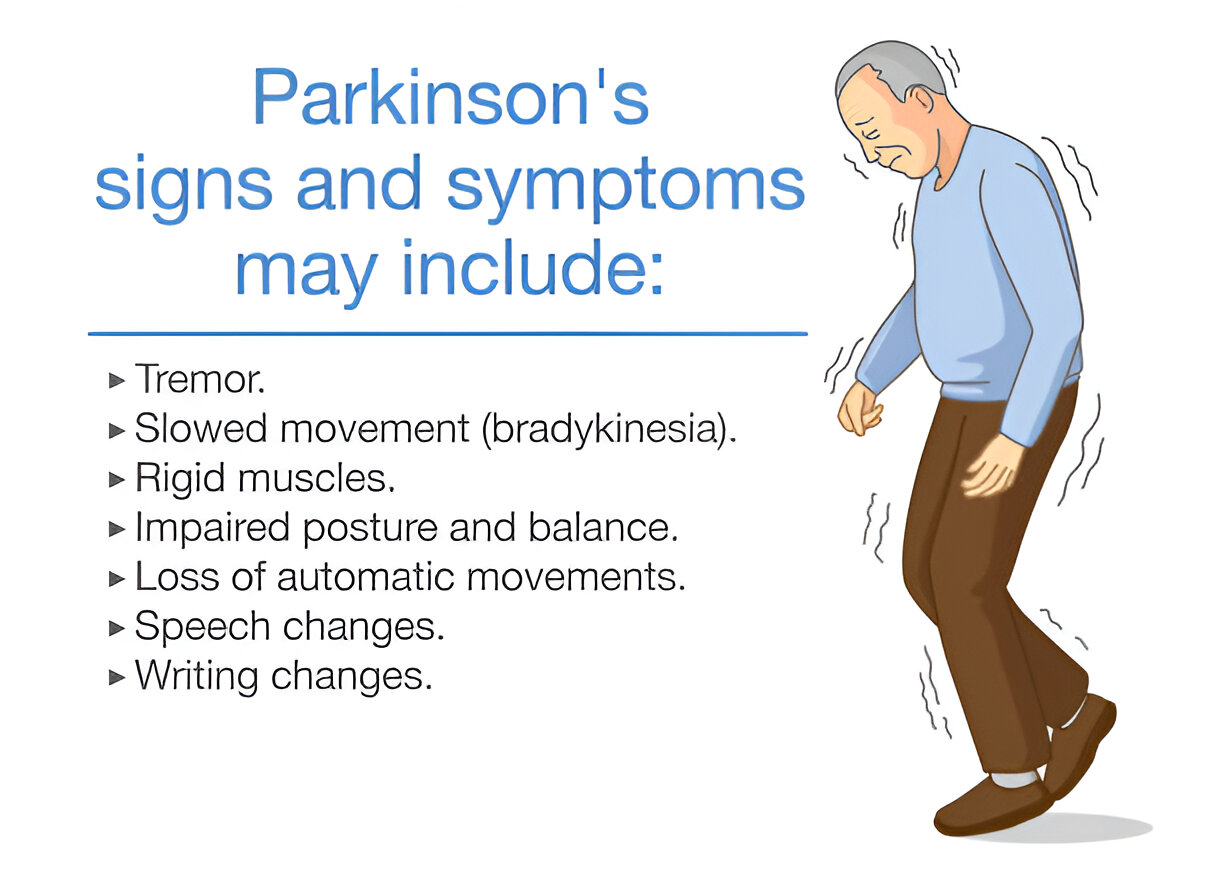-
Brain & Spine Clinic Zobra Canal Road Near SCB Medical college Cuttack
-
SUM Hospital, K8 Kalinga Nagar, Kalinganagar, Bhubaneswar, Odisha
-
srikantswainvss@gmail.com

Early Signs of Parkinson’s Disease You Shouldn’t Ignore
Parkinson’s disease is a progressive neurological disorder that affects movement, muscle control, and balance. While it is most commonly associated with older adults, its early symptoms can appear years before diagnosis and are often subtle. Recognizing these early signs can make a significant difference in managing the condition and improving quality of life.
1. Tremors at Rest
One of the most recognizable early signs is a slight shaking or tremor, often in the hands or fingers. It typically starts on one side of the body and may occur even when the limb is at rest. While occasional shaking could be due to stress or fatigue, persistent tremors should be evaluated.
2. Changes in Handwriting (Micrographia)
People in the early stages of Parkinson’s often notice their handwriting becomes smaller, crampier, or harder to read. This condition is known as micrographia. It may reflect stiffness or slowness in hand movements, which are common motor symptoms.
3. Slowness of Movement (Bradykinesia)
Bradykinesia refers to a slowness in initiating or completing movements. You may find it takes longer to do simple tasks like buttoning a shirt, brushing your teeth, or even walking. Movements may also become more deliberate and less fluid.
4. Muscle Stiffness
Stiffness or rigidity in the arms, legs, or trunk—especially if it doesn’t go away with movement—can be an early sign. This muscle stiffness can limit your range of motion and make daily tasks more difficult. It might also cause pain or cramping.
5. Loss of Facial Expression (Masked Face)
People with Parkinson’s may develop a reduced range of facial expressions. Others might comment that you look serious, sad, or “blank” even when you’re not. This is due to the decreased automatic muscle movement in the face.
6. Voice Changes
A softer, hoarse, or monotone voice can be an early symptom. You may notice you’re not speaking as clearly or loudly as you used to, and others might find it difficult to hear you.
7. Changes in Posture and Gait
A stooped posture, reduced arm swing while walking, or a general feeling of imbalance may occur in the early stages. You might also start dragging one leg or shuffling your feet without realizing it.
8. Sleep Disturbances
Many people with early Parkinson’s experience restless sleep, vivid dreams, or sudden movements during the night. Sleep disorders like REM sleep behaviour disorder (RBD) can precede motor symptoms by years.
When to See a Neurologist
If you or someone you know is experiencing a combination of these symptoms—especially if they persist or worsen—it’s important to consult a neurologist. Early diagnosis can lead to earlier treatment, which may slow progression and help manage symptoms effectively.
Parkinson’s disease may develop silently, but its early signs offer clues that something is wrong. Paying attention to these subtle changes can be the key to early intervention, better symptom control, and an improved quality of life.
